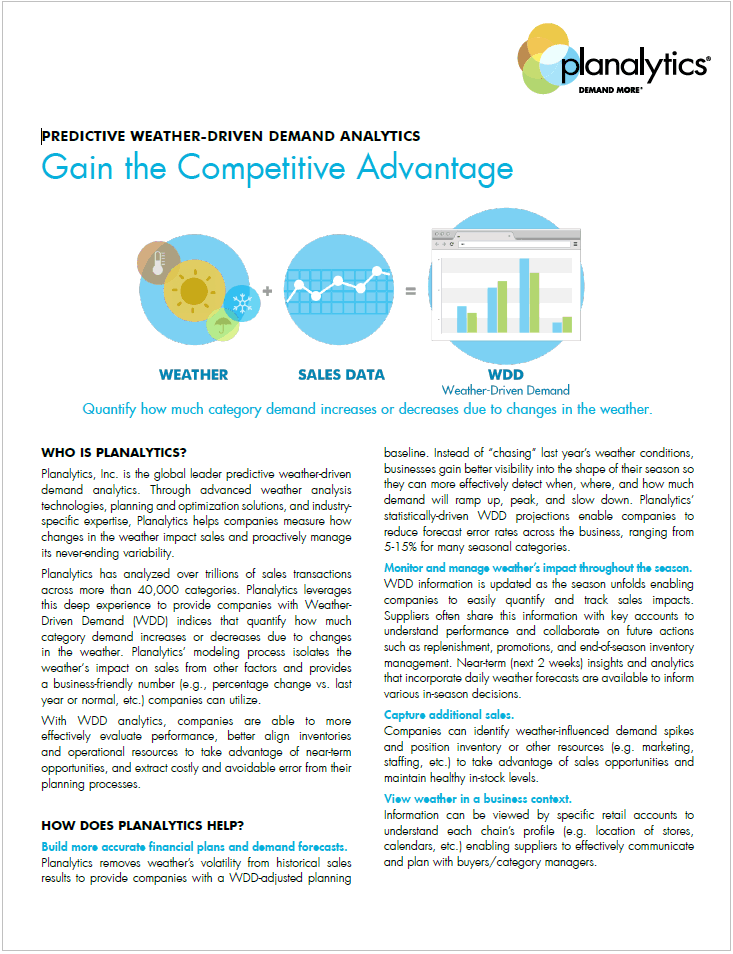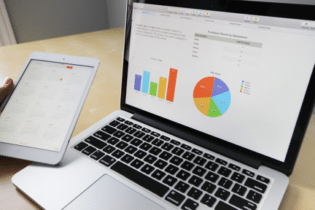
Changes in the weather impact demand for most consumer goods from foods and beverages to household and personal care items to products for the home, garden, and garage. Planalytics’ predictive weather-driven demandSM analytics for consumer goods precisely quantifies how sales are affected, enabling companies to optimize sales and inventory plans, marketing campaigns, promotions, and more. Consumer brands also can also use weather-adjusted results to evaluate performance more clearly (e.g., regional sales, promotions, etc.). Day-to-day changes in the weather have a direct influence on the traffic (store or online) and the demand for specific products. Weather sensitivity is a measure of how much a product’s sales shift on average due to the weather. For example, 17% (of annual sales) for lawn mowers, 32% for heaters, 7% for soup, 10% for sports drinks, 15% for sunscreens, and 49% for snow removal products – and weather sensitivity can be more pronounced at certain times of the year and in specific markets or regions. (Note that the preceding examples are industry metrics. Planalytics also provides specific weather impact models based on retailer-specific sales data, locations, store types or channels, etc.) Companies predictive Weather-Driven DemandSM (WDDSM) analytics into existing processes and technology solutions to: Build more accurate financial plans and demand forecasts. Get a better view of the upcoming sales season and more clearly identify when, where, and how much demand will increase or decrease. Monitor and manage the weather’s impact throughout the season. Information is updated as the season unfolds enabling businesses to easily quantify and track sales impacts. Capture additional sales. Identify weather-influenced demand spikes and position inventory or marketing/promotions to take advantage of sales opportunities and maintain high in-stock/service levels. Contact us to learn how Planalytics’ predictive demand analytics can help your business. Additional Insights
|

NRF White Paper: Climate-Proofing Retail
|
||||||||||







